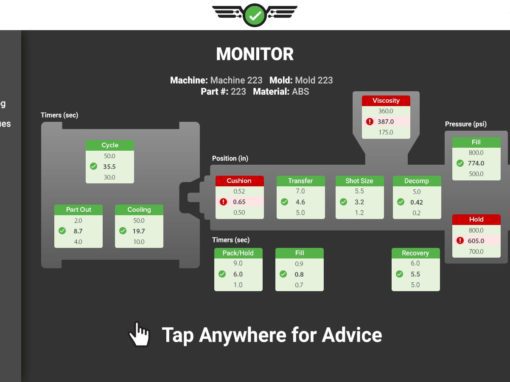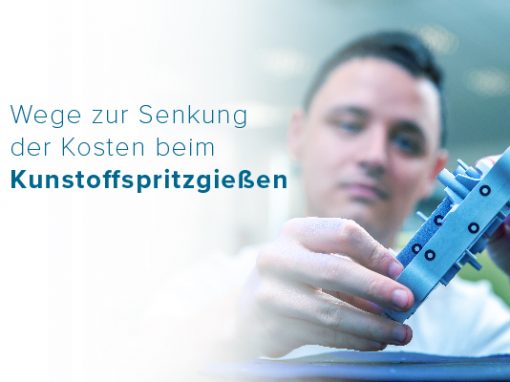Tip of the Day 98: Auto-Starting Jobs
A reader of tip # 97 noticed that I mentioned „auto-start“ and wanted to know more about it. Here goes…
Philosophy
The initial idea behind the eDART™ was to remove user interaction with the eDART from the untrained user as much as possible. This is why we „stick“ software to the mold with the Architect, why the Lynx sensors identify the mold and machine and why cross-copy was concieved to keep the plant-wide records straight. The idea is that the operator should only need to plug a Lynx cable into the mold and the system would take care of itself.
Auto-Start
The icing on the cake for this automated (  ) operation is that the eDART can be set up to start the job automatically if it recognizes Lynx sensors being plugged in that identify a previously run mold. If auto-start is turned on then, after a period of time, if the mold and machine are identified the job starts automatically, just as if you pressed „Accept“.
) operation is that the eDART can be set up to start the job automatically if it recognizes Lynx sensors being plugged in that identify a previously run mold. If auto-start is turned on then, after a period of time, if the mold and machine are identified the job starts automatically, just as if you pressed „Accept“.
Furthermore the Sensor Locations can also be set to auto-start after a short period. If all of the sensor types and locations are filled in (not blank) then Sensor Locations will push its own „Accept“ button like Job Setup and the rest of the software will then start up.
Note that if you are using auto-start and have a power outage all of the eDARTs connected to sensors should start up and start the same job where they left off without any action from the operator.
Warnings for Using Auto-Start
-
- Changing Materials: The eDART auto-starts with the last process assigned to the mold when it identifies the mold sensor. It cannot identify the material automatically. If the mold is likely to run with different materials each time then auto-start of the job is not for you. You could still auto-start the sensor locations.
-
- Not plugging in the Lynx cable: Since auto-start is based on identifying the mold then if operators do not plug in the cable it will not work. The previous job will continue to run until someone either plugs in the cable or changes it by hand.
-
- Mixed molds with and without Lynx sensors: If you have some molds without sensors and some with then operators will still need to know to start the job by hand on those molds without sensors. If they do not then the job will continue to run under the previous setup and all data will be recorded there.
-
- Not Stopping the Job: The auto-start does not auto-stop when the Lynx cable is unplugged (a risky proposition at best). So your system overview will show the job as „Down“ when the mold is removed and no other mold is installed. You should encourage operators to stop the job if you want overview to show „No Job“ when there really is no job scheduled for the press.
-
- Training for First Time Mold / Sensor Selection: Auto-start will not auto-start unless it knows the mold, machine and all of the sensors have been set up. So someone will still need to be trained how to choose the right mold / material / cavitation, sensor locations, press on sensors to check set the pin sizes etc. If you have the eDART Data Manager (or server with cross-copy) then once set on one eDART the setup will be ready for auto-start on any eDART.
Setting up Auto-Start
Turning on the auto-start is done by setting a pair of software switches in the system configuration file (system.cfg). Since we do not encourage customers to edit the file themselves we have a software installer (and un-install or „turn off“) that can be used to turn it on and off. Contact RJG Customer support if you are interested.
See Art’s Tips to find earlier Tips of the Day.

